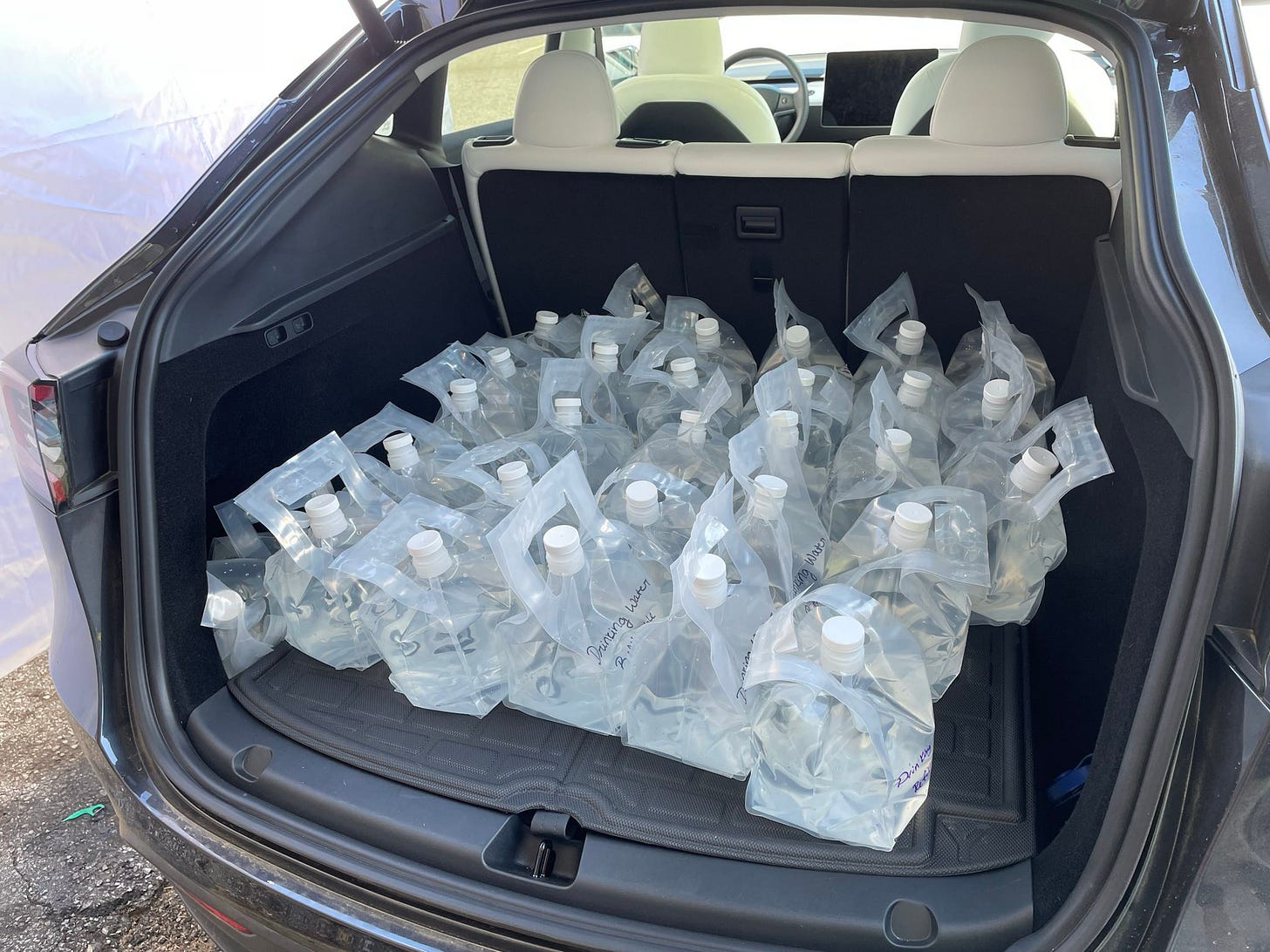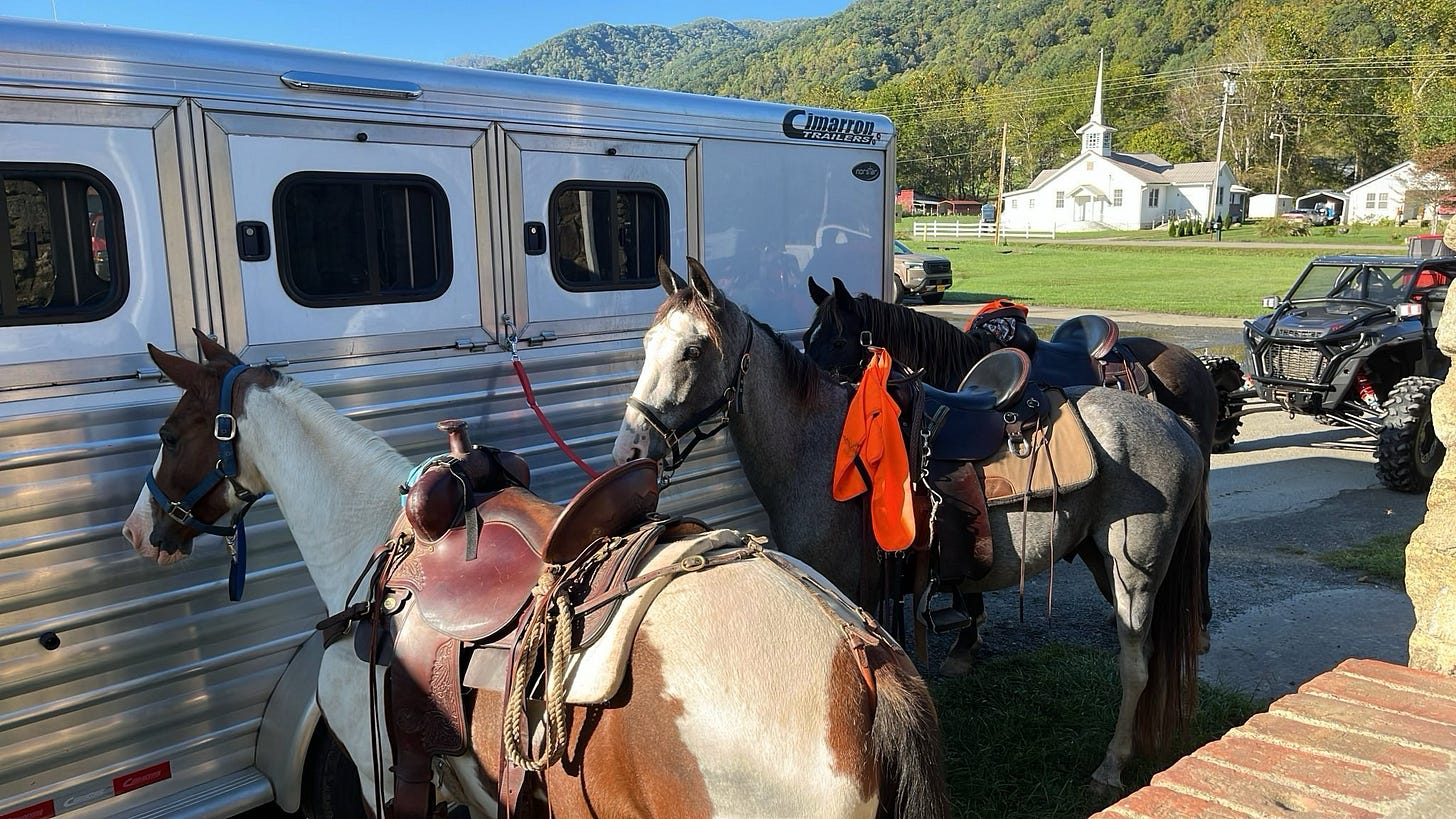Falling Into Mindfulness — An Autumn Oriented Rest Series
Mindfulness During Crisis Situations

Welcome Back to our Autumn Falling Into Mindfulness Series
In last week’s article, we chatted a bit about starting our meditation practice for the fall and looked into how a regular mindfulness practice helps us build a new relationship with our discomfort. Each of these articles can be read on their own, but if you’re looking for more mindful grist for the mill feel free to read last week’s Falling Into Mindfulness Article or join us in our Falling Into Mindfulness Autumn Art Practice.
Originally this week’s article was going to be unpacking the roadblocks to letting ourselves rest under the normal circumstances of life. However, with the devastating effects of Hurricane Helene, re-reading the content that was pre-scheduled to publish left me feeling nauseated knowing that the relevance of mindfulness under “ordinary circumstances” isn’t really something that is afforded to the community that I am currently in.
So instead, today we’ll be pivoting to talk about something that doesn’t often get discussed in mindfulness material but is important for navigating all sorts of extreme circumstances—mindfulness during crisis1.
What is a ‘Crisis?’
Although I am currently writing this article with the recent Hurricane Helene in mind, when I talk about a crisis, what I mean is any circumstances that place the nervous system in a state of physiological arousal and activation for prolonged periods of time without breaks.
A crisis could look like a prolonged period of grieving. It could look like being in the middle or acute aftermath of an abusive relationship. It could be a never-ending sprint at a high-stress job with no end in sight. And in this case, it could be something completely uncontrollable like a natural disaster.
They key underpinning to ‘crisis’ is more so around what is happening in your nervous system, rather than what the external circumstances are. Our bodies are created to move through different states of activation and deactivation. So contrary to popular psychology—being in a state of fight or flight is not the problem. Being unable to move out of that state of physiological arousal is the problem.
Is Mindfulness the Best Tool for a Crisis?
Mindfulness in the popular eye is often thought to be the ‘apply to anything’ protocol for many practitioners from both secular and non-secular spaces. However, when you dive deeper into conversations with various experts in the field of mindfulness, there is actually much heated debate about if mindfulness always the most skillful tool during a crisis.
Many spiritual practitioners—particularly from American Buddhist traditions—are fairly likely to say, “yes!” this is still the most relevant tool in a crisis, whereas the scientific community and secular trauma researchers might vehemently disagree2. Ultimately, while it is often a failure of language and understanding each other’s perspectives, but both parties might still be correct.
During a crisis, mindfulness is a useful tool when it is used skillfully in conjunction with other skillful tools.
In the middle of a crisis we still want to be making sure that we are responding rather than reacting so that we do not take a bad situation and make it worse. However, the mistake we do not want to make is to assume that when we notice our bodies feeling stressed, activated, or in a state of flight/fight/freeze/fawn or shut down—that this is a bad thing.
Quite the opposite, in fact. Our bodies responding to an emergency with a shifting state of nervous system activation means that our bodies are healthy and functioning well by responding to their immediate environment. What we want to avoid is hyper focusing on the acute, uncomfortable sensations of our mindfulness practice and instead move towards other, more useful tools.
Redirecting to A Compassion Practice
The truth is, during a state of crisis, a baseline amount of awareness and reflective abilities are crucial in recognizing an extra layer of support is needed. A certain amount of mindful awareness is also useful when skillfully pursuing those extra layers of support.
However, mindfulness alone—especially pop-psychology-over-secularized-mindfulness might direct someone to hyper-focus and ruminate on sensations of discomfort and try to ‘stay with’ those feelings3. While under safe, normal, daily circumstances this can be a helpful tool to practice, under situations of crisis—hyper-focusing on sensations of discomfort and staying with those feelings of discomfort can substantially strain the nervous system’s natural ability to respond to a dangerous situation4.
Instead of just trying ‘to stay present’ with the difficult circumstances—the moment we mindfully recognize that we are in an unusually stressful situation, it may be more skillful to switch to acknowledging the level of intensity of our circumstances and begin to skillfully use other tools.
If we have a bit of time before we need to make a thoughtful response and we want to continue to metabolize our feelings in real-time instead of waiting for the crisis to be over (or we don’t have a clear sense of when the crisis might be over,) it can be useful to shift towards a compassion practice towards ourselves and others who may be sharing in our circumstance instead.
What Is Compassion?
Compassion is defined as a recognition and empathy towards suffering. In eastern collective cultures, there is no need to make the distinction between compassion towards self and others. However, in our dominant, hyper-individualized culture, we’ve actually had to invent the word and concept of “self-compassion” to help encompass the idea that we are also deserving of empathy towards our own suffering.
Compassionate phrases for the self and the other are traditionally phrases like:
I am noticing that there is a lot of pain here. You/I are not alone in your pain.
This is a very difficult time right now. You/I have had difficult times before and made it through the other side. You/I will make it through this difficult time, too.
Many people are in grief, discomfort, and pain right now. I acknowledge that it is difficult to be in contact with that grief, discomfort, and pain without being able to alleviate it.
While these phrases are true, and sometimes very relieving to hear—sometimes they are not the most practical or soothing for an acute moment of crisis.
During times of acute crisis, emergency, or panic, taking a bit of extra time to find phrases that are personally soothing and comforting can be key. Some of my personal favorites include:
You are/I am doing a good job at a hard thing5
Your/my tears, pain, and discomfort do not scare me, I am able to stay with them and they are welcome here.
I will not abandon you/myself during this time of pain. I will create space for these emotions as long as they take, even if I/we need to take breaks to find their natural end.
Even if I/you cannot see clearly right now, I trust that this difficult time is bringing me/us wisdom to help myself and others in the future.
These compassionate phrases do not render the crisis solved, but they can help us sustain ourselves during a difficult process with an unclear timeline.
Compassion is also not our only tool. During the middle of a crisis, other tools are often needed as well.

Other Options In A Crisis
Obviously, in the case of an emergency, calling 911 is in many cases an option when we need immediate, emergency assistance6. If you are in danger, please always remove yourself from the danger as quickly and safely as possible and bring in other skillful resources to keep yourself and others from the mounting danger.
However, in drawn out situations that are highly complex and ambiguous— our sense of agency to make moment-by-moment, skillful decisions can be somewhat limited. It’s in these times that sometimes it’s skillful to put our mindfulness practice down and focus on other ways of tending to ourselves and our communities.
Sometimes a skillful practice is connecting authentically with others. Sometimes this means distracting ourselves with some form of self-soothing habit. Sometimes this means helping and keeping busy with mutual aid. Sometimes this is about taking a rest, a nap, or eating for fuel or nourishment.
Just like there is no “wrong” way to grieve, there is also no “wrong” way to manage a crisis, as long as you’re not hurting anyone else in the process.
How To Support During Hurricane Helene
While this article certainly pertains to various modes of crisis—writing this article is in direct response the aftermath of Hurricane Helene. I want to underscore that the devastation of the natural disaster in this area is severe.
If you are in the area affected by the storm, it’s pretty unlikely that you’re reading this. However, on the off-chance that you are and there are ways you feel that The Art of Rest could be supportive—please feel free to reach out about local resources and we will do our best to connect you. Email us at dagnyrose@theartofrest.me to let us know how we can help.
It’s more likely that if you’re reading this, you’re somewhere slightly removed from this crisis. In the coming weeks, I will be updating as much as I can around ways to support mutual aid to Western North Carolina (especially to the artists, creatives, and rest-related providers affected in the area). Check the footnotes for some places to start.7
Take care of yourselves.
Take care of your communities.
&As per usual, thank you for being here.
I’m so grateful <3
DagnyRose
Please note that this is not an article that is intended to be taken as medical advice or replace any professional services from a mental health or medical provider.
This primarily comes from a very granular approach to how we define mindfulness in a lab which often entirely separates it from practices of self compassion. When we look at the research in this granular way, sometimes trauma research will find that increased mindfulness during a time of crisis can actually increase the severity of symptoms of PTSD. There’s a lot to say about this connection and possible reasons it could occur, but the most important thing to know here is that mindfulness does not cause increased PTSD symptoms.
I literally even wrote about this in last week’s article about discomfort. It’s a common practice and is helpful when learning under normal, safe circumstances.
In a true crisis, the body and nervous system is asking for the body to respond with a certain amount of urgency to find and stabilize a situation of safety. I’ll reiterate here that the nervous system moving into a state of fight or flight (or fawn, or freeze) is not the problem here. The problem is that sometimes in mindfulness practices, people will override or ‘bypass’ the body’s natural cues. When the body’s cues are ignored for long periods of time, this prevents the body from completing the physiological cycle of stress and the body retains that stress for longer. In more simple terms, the body is being desensitized to high levels of stress and this stress becomes normalized. While this is fairly unlikely to happen in one-off crises like natural disasters, this pattern of normalizing and desensitizing high stress is part of what makes it so difficult to leave situations of abuse.
As gifted to me by my best friend Carly.
I want to acknowledge that for traditionally marginalized communities, this is not always the safest choice and that other forms of mutual aid might be a better option.



